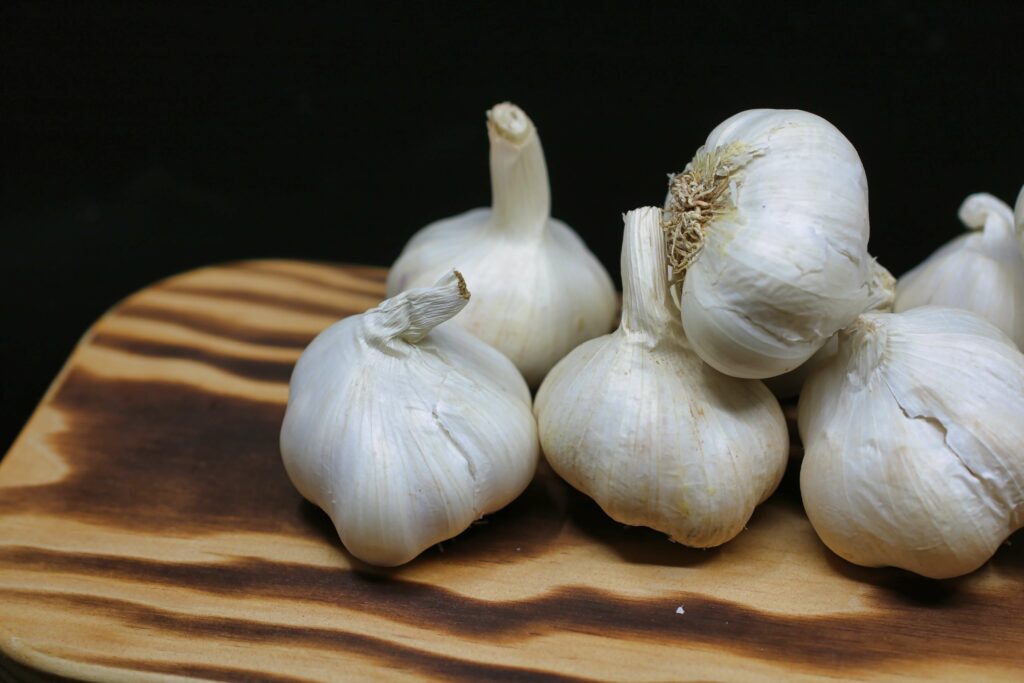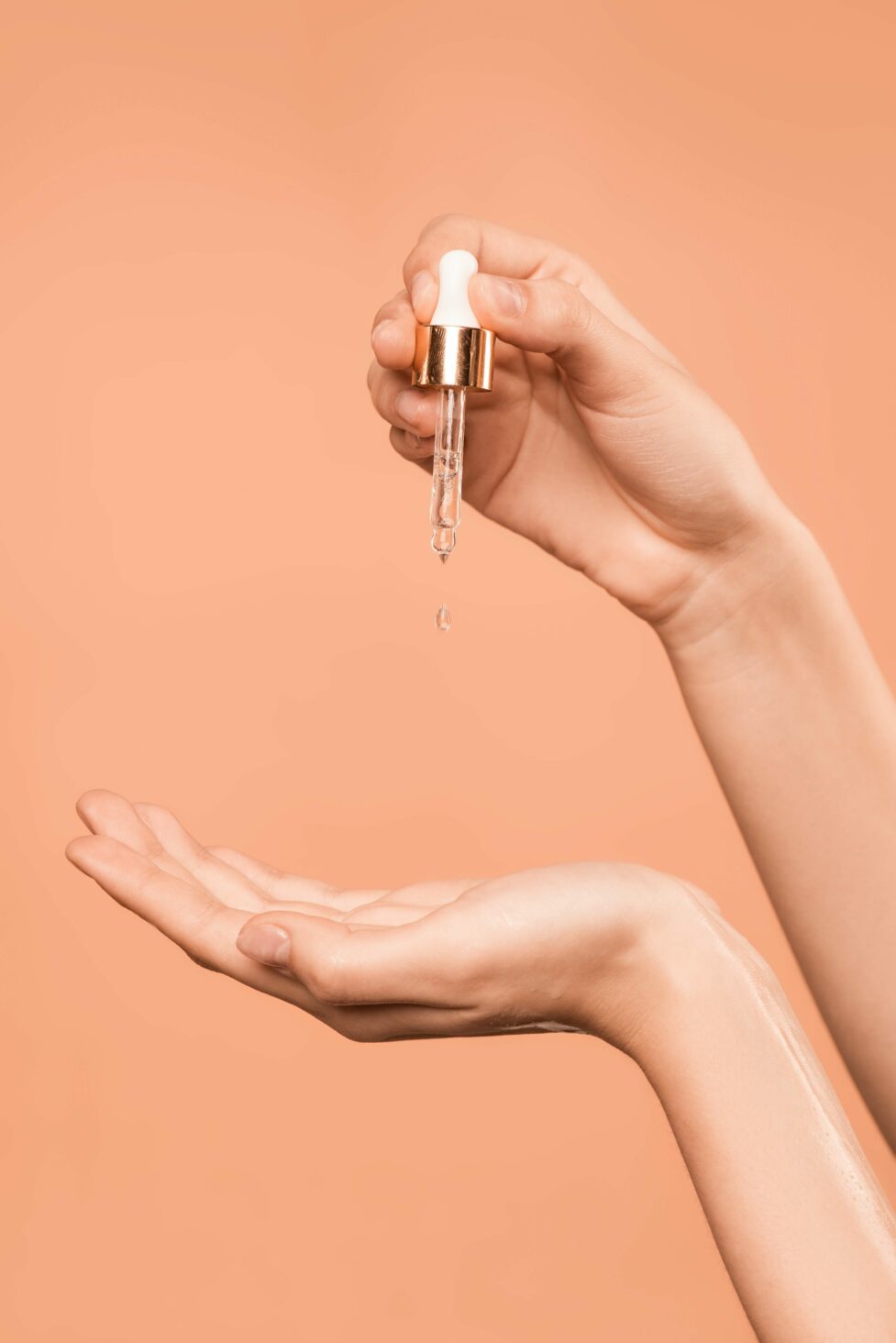Did you know that garlic has been used medicinally throughout history? It is a powerful herb that has many health and first aid benefits. We will discuss what garlic tincture is, how to make it, and how to use it. We will also cover the possible side effects of garlic tincture, so you can be informed before using it yourself!
How Garlic Was Used Medicinally Throughout History

The scientific name for garlic is allium sativum. It is a member of the onion family and has been used medicinally for centuries. In fact, garlic has been mentioned in medical texts dating back to 5000 BC! Garlic was used to treat a variety of ailments including:
- respiratory problems
- gastrointestinal issues
- infections
- skin conditions
- wounds
The ancient Egyptians believed that garlic had mystical powers and used it as an offering to their gods. In fact, garlic was so revered by the Egyptians that it was even used in the mummification process! Garlic was also used in ancient Greece and Rome for its medicinal properties.
Garlic continued to be used medicinally throughout the Middle Ages and was often used to treat the Black Plague. It was also used to treat other diseases, such as smallpox and leprosy. It was even thought to be a cure for baldness.
Interestingly, garlic was not used medicinally in China until the 20th century. However, it is now used in Chinese medicine to treat many different ailments, including high blood pressure and cholesterol.
Garlic was thought to be a cure-all for many different ailments in many cultures, and it was even used to ward off vampires! It was also thought to be a good luck charm, and some people wore it to ward off evil spirits.
Garlic was even mentioned in the Bible. In the Book of Numbers, God told Moses to have the Israelites eat garlic before going into battle because it would give them strength.
What Is a Garlic Tincture and What Is It Good For?
A garlic tincture is an extract made from garlic cloves soaked in alcohol. The garlic-infused alcohol is then used to treat a wide range of ailments.
Garlic tincture is most commonly used as a natural antibiotic. It can be taken orally or applied topically to fight infections. Garlic tincture is also thought to boost the immune system, so it can be taken as a preventative to ward off colds and other illnesses.
Garlic has been found to lower blood pressure and cholesterol, so garlic tincture can also be used as a natural treatment for these conditions under the supervision of a physician. It works by thinning the blood, which helps to prevent heart attacks and strokes, making for healthier blood vessels.
Garlic also detoxifies the body and helps to cleanse the liver. Garlic tincture can treat digestive problems, such as constipation, diarrhea, and bloating. It can also treat respiratory problems, such as chronic bronchitis, asthma, and congestion.
Garlic tincture can also be applied topically to treat wounds, insect bites, and other skin conditions. When applied to insect bites, it helps reduce swelling and pain. Garlic tincture can be used topically to treat acne, athlete’s foot, and fungal infections.
Garlic is also a natural antioxidant. This means that garlic tincture can be used to treat wrinkles and other signs of aging. Garlic is also a good source of selenium. Selenium is a mineral that is important for the health of your hair, skin, and nails.
How to Make Your Own Garlic Tincture
Making your own garlic tincture is easy! All you need are chopped garlic cloves and alcohol, such as vodka or Everclear.
Garlic Tincture Recipe
Ingredients:
- ½ cup raw garlic cloves
- ½ cup vodka or Everclear
Instructions for Making Garlic Tincture:
Peel the garlic cloves and chop them. Add the cloves to a clean jar. Pour the alcohol over the garlic, making sure that all of the garlic is covered. Seal the jar tightly and store it in a cool, dark place for two weeks. Shake the jar every few days.
After two weeks, strain the garlic tincture using a coffee filter or cheesecloth. Bottle the garlic tincture and label it with the date it was made. It will keep for up to a year when stored in a cool, dark area. Many people like to bottle their garlic tincture in labeled dropper bottles like the kind you can get at pharmacies and health food stores.
You may also double the recipe, using one cup of each instead of one-half cup. Choose organic garlic or garlic from your garden to avoid pesticides.

How to Use Garlic Tincture
Garlic tincture can be taken orally or applied topically.
When taking garlic tincture orally, it is important to start with a low dose and increase as needed. The recommended dosage is four to five drops per day, which can be taken in a glass of water.
If you are using garlic tincture topically, you can apply it directly to the skin. Or you may dilute it in distilled water or carrier oil, such as jojoba oil or almond oil. When using garlic tincture topically, it is important to do a patch test first to ensure you are not allergic.
To treat acne, athlete’s foot, or fungal infections, apply the garlic tincture to the affected area two to three times per day. To treat insect bites and stings, apply the garlic tincture to the affected area as needed for relief.
Possible Side Effects of Garlic Tincture
Garlic tincture is generally safe for most people when taken orally or applied topically in small amounts. However, there are some possible side effects to be aware of.
Garlic tincture can cause heartburn, nausea, and vomiting when taken in large amounts. It can also cause garlic breath! If you experience any of these side effects, reduce your dose or stop taking garlic tincture altogether. If you are on blood thinners, garlic tincture can increase the risk of bleeding, so do not take garlic tincture if you are on blood thinners.
Some women experience menstrual changes when taking garlic tincture. If you are pregnant or breastfeeding, do not take garlic tincture without first speaking to your healthcare provider.
If you have any other health conditions or are taking any medication, please consult with your healthcare provider before taking garlic tincture.
As with any natural remedy, garlic tincture may not be right for everyone. If you have a garlic allergy, garlic tincture is obviously not the right choice for you!
Final thoughts on Garlic Tinctures
And that’s it! You now know how to make a garlic tincture and all of the different ways you can use it. Give it a try the next time you feel under the weather or have an infection. We’re sure you’ll be impressed with garlic tincture’s powerful effects!
Please note that this post is for informational purposes only and does not constitute medical advice. If you have any concerns about taking garlic tincture, please consult with your healthcare provider.
Have you ever made a garlic tincture? What did you use it for? Share your experience in the comments below!
Happy tincturing!


About your article; How to Make a Garlic Tincture: A Comprehensive Guide
The dosage is to low. The Amish state: DOSE: 40 to 80 drops after meals, or four times per day for more serious conditions. For cleansing antibiotic garlic enemas, 40 drops per cup of water is excellent.
Source: https://www.heavenandherbs.com/product_info.php?products_id=148
The Amish state: DOSE: 40 to 80 drops after meals, or four times per day for more serious conditions. For cleansing antibiotic garlic enemas, 40 drops per cup of water is excellent. https://www.heavenandherbs.com/product_info.php?products_id=148
wonderful
Can I use the garlic that was strained from the tincture, or do I just through it out?
I am wondering what you do with the garlic itself after strained?